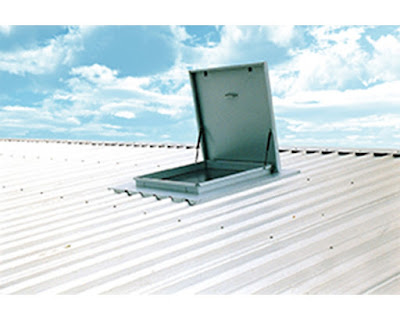HOW BIG DOES A ROOF HATCH NEED TO BE?
Roof hatches, manufactured with many features and options such as weatherproof performance, ensure safe access for your maintenance team. It is essential to know about basic Roof hatch Adelaide specifications, including hatch selection considerations and the various options available when working with roof hatches. Roof hatches are frequently offered in a variety of sizes. When selecting a hatch size for a certain application, there are numerous elements to consider. First, decide if you'll utilise the hatch to obtain quick access to your business's roof or to install or remove equipment from a structure.
What is a rooftop hatchet?
A roof hatchet is a type of large timber mobile home that is used to remove roofing materials. It is particularly useful when a large scale project is needed where access to the roof or roofing is at a premium. A roof hatchet can be an extension of a camper or a mobile home. However, a roofing hatchet is distinct from these other uses as it can be used to remove roofing materials on the structure itself. Depending on the application and budget, respondents report using the roof hatchet to remove exterior wooden shingles, decorative shingles, and awnings.
What are the different types of roof hatch?
These are the most common types of roof hatch Adelaide available: - Single-storey: Used to gain access to roofs that have multiple storeys. This type of roof hatch usually has a horizontal bar across the opening to gain access to the roofs.
- Double-storey: Used to gain access to roofs with two or three storeys. This type of roof hatch usually has a vertical bar across the opening to gain access to the roofs.
- Triple-storey: Used to gain access to roofs with three or four storeys. This type of roof hatch usually has a vertical opening on the side that allows access to the roofs.
- Evaporative: Used to gain access to roofs that are rapidly becoming windy. This type of roof hatch is designed to gain access by collecting the airstream, or wind, that is flowing through the structure.
- Gutter: A gutter roof hatch that does not capture the airstream. Gutter roofs usually have a horizontal opening, with the eaves being concealed by a low wall.
How to Select the Right Roof Hatch for Your Needs
From there, it's onto the important part. Make sure you understand the different types of roof hatch available, their specification and how they're used. The best roof hatches are those that meet or exceed expectations. There are a number of factors to consider when choosing the right roof hatches Adelaide for your needs. These include the type of roof you want, the style and finish of the roof, the roof's construction, the budget you are able to spend, and the location of your home.
How Big Does a Roof Hatchet Need to Be?
The size and weight of a roofing hatchet depend on a number of factors, including the type of roof you want to remove, the floor area, the number of workers required to work on the roof, and the roof's structural integrity. The minimum roof hatchet dimensions to remove a roof typically include:
- Overall length: This is the length of the roof from end to end. It is typically marked on the roof as the 'L' and 'M'. - Lateral length: This is the length of the lateral sides of the roof. It is typically marked on the roof as 'L' and 'S'.
- Vertical length: This is the length of the vertical sides of the roof. It is typically marked on the roof as 'V' and 'D'.
- Overall weight: This is the total weight of the roof and its components.
- Thickness: The thickness of the roof is determined by the materials and construction of the roof. It is set at a given thickness to absorb all the water, wind and other elements that may enter the roof.
Bottom line
The basic rule of thumb when choosing the right roof hatches Adelaide for your needs is to make sure the roof hatchet capabilities are available but at a reduced price. When choosing the right roof hatch for your needs, you'll want to ensure that the ability to remove all the materials from a roof is included. This will help to lower the overall cost of the project and ensure that the project is completed successfully. Another consideration is the availability of materials when removing the roof. This will help you to avoid purchasing materials that you cannot use. Finally, remember to choose a roof that has a low chance of fire and explosion.
This will help to ensure that your work is successful and that your investment in the roof is worthwhile. When it comes to choosing the right roof hatchet for your needs, it is important to understand the different types of roof hatch available, the specification and how they're used. The best roof hatches are those that meet or exceed expectations.



Comments
Post a Comment